Outsourcing to Czechia

How much does it cost to hire developers in Czechia?
Dec 2nd 25 - by Devico Team
Find out how much it costs to hire software developers in Czechia in 2025. Compare hourly rates, roles, and factors that impact pricing.
Hire
Hire by role
Hire Front-end developers
Hire Back-end developers
Hire Full-stack developers
Hire Android developers
Hire iOS developers
Hire Mobile developers
Hire AI engineers
Hire ML engineers
Hire Automation QA engineers
Hire Blockchain developers
Hire Data engineers
Hire Cloud engineers
Hire by skill
Hire JavaScript developers
Hire TypeScript developers
Hire Ruby on Rails developers
Hire React Native developers
Hire Flutter developers
Hire Golang developers
Hire React.js developers
Hire Python developers
Hire PHP developers
Hire .NET developers
Hire Java developers
Hire Laravel developers

Legacy modernization
May 07, 2024 - by Devico Team
Summarize with:
The reliance on legacy software persists, despite its inherent challenges. The 2020 Mainframe Modernization Business Barometer Report reveals that 74% of businesses in the US still rely on legacy systems to some extent. This is even more mind-blowing considering all that breaches happened in the previous two years.
These legacy applications are essentially the clunky flip phones of the IT world. While familiar and functional, they lack the capabilities and agility of their modern smartphone counterparts. Or you can imagine them as old "antique" houses in a Korean megacity. Beautiful, no doubt. But non-functional: there are a lot of people and earthquakes happen from time to time.
We’re now living in times when a hybrid IT environment reigns supreme, and technological agility is paramount for business survival. Yet, the journey towards modernization is rife with challenges. Legacy applications pose significant obstacles, from compatibility issues to security vulnerabilities. It's no coincidence that more than half of the C-suite respondents in the aforementioned study are using modernization to improve the security of their data.
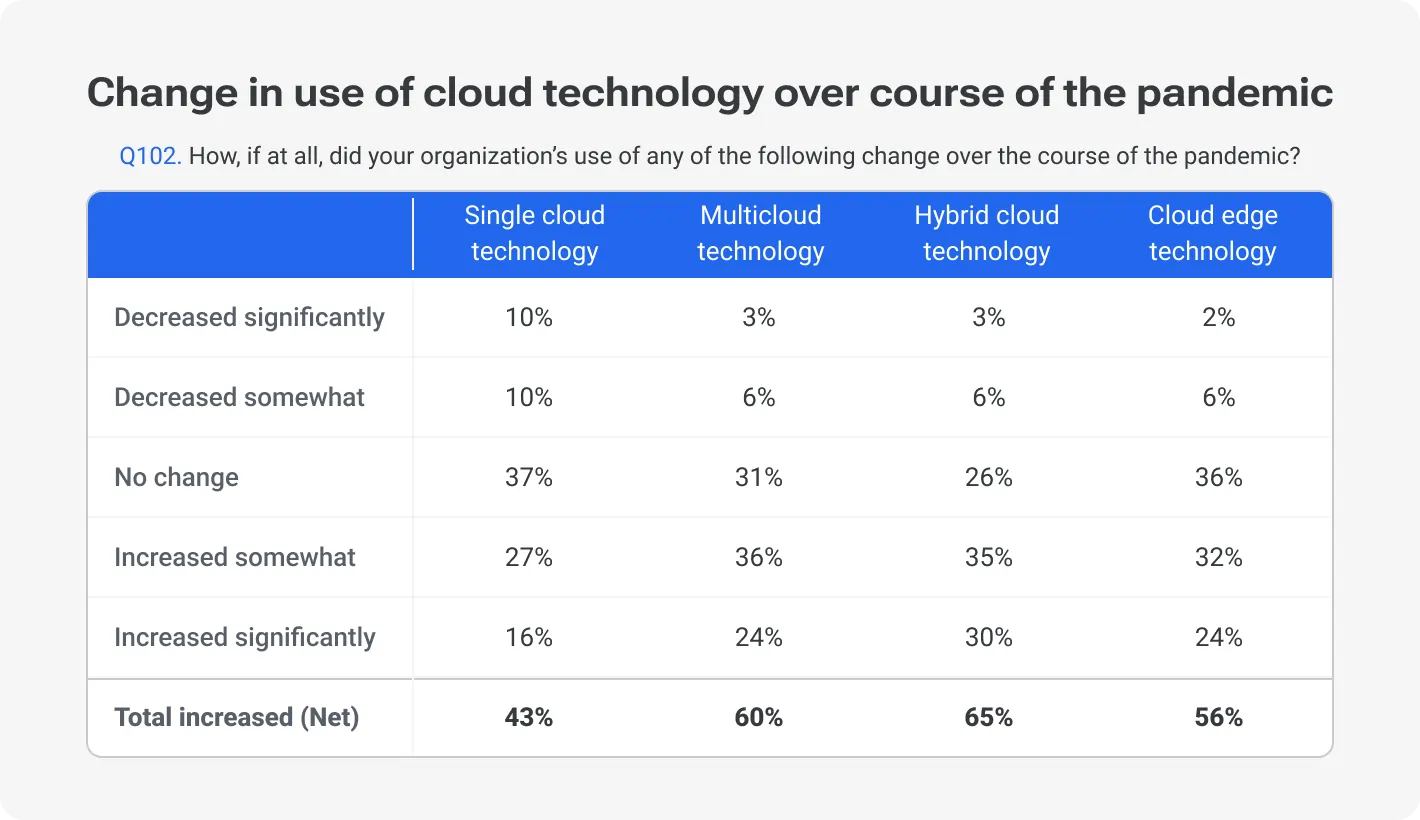
Meantime, 95% of those surveyed by Microsoft agree that hybrid cloud is a next-level door to success in the digitalized world. By the way, 86% of them also confirmed they plan to invest more in such a “door”.
So, let’s delve into legacy application management, exploring the key challenges faced by businesses in managing their hybrid multicloud environments.
Any new endeavor must be preceded by careful examination. You may know your product or service inside-out, but still your efforts should be re-evaluated every time. This way, you ensure their effectiveness and feasibility.
A successful hybrid multicloud strategy, too, hinges on a thorough understanding of your existing IT landscape. Legacy applications, with their unique architectures and technology stacks, can be complex beasts. So taking the time to assess them properly is crucial for optimizing their integration within your hybrid environment.
You should gain a deep understanding of the architecture and technology stack underlying legacy applications before you actually start the modernization. Typically, pros often analyze the structure, components, dependencies, and integration points of the application.
Tools like X-Ray by AWS or Azure Monitor by Microsoft can visually represent your application's architecture and dependencies, aiding in a swift assessment.
Don't just focus on the technical composition. Evaluate the application's integration capabilities. Can it seamlessly exchange data with other systems within your hybrid IT environment?
Top Tips for Assessing Architecture
Discover automated discovery tools: Tools like CAST Highlight or SonarQube can automatically analyze code repositories and provide insights into application architecture, dependencies, and potential risks.
External architects can help: Engage experienced architects or consultants to perform thorough assessments of the application's architecture. They can identify architectural patterns, anti-patterns, and areas for improvement.
One of the most often hybrid cloud challenges is hidden risks and impacts that may not be immediately apparent. For example, unaccounted expenses like increased operational costs, compliance violations, and the most dangerous issue — security breaches.
IBM Security found that data breaches cost companies an average of USD 4.45M. Legacy applications, with their outdated security protocols and vulnerabilities, can significantly contribute to these costs by providing attackers with easy access to sensitive data.
By the way, this is an additional reason why US companies plan to increase the number of cloud providers.
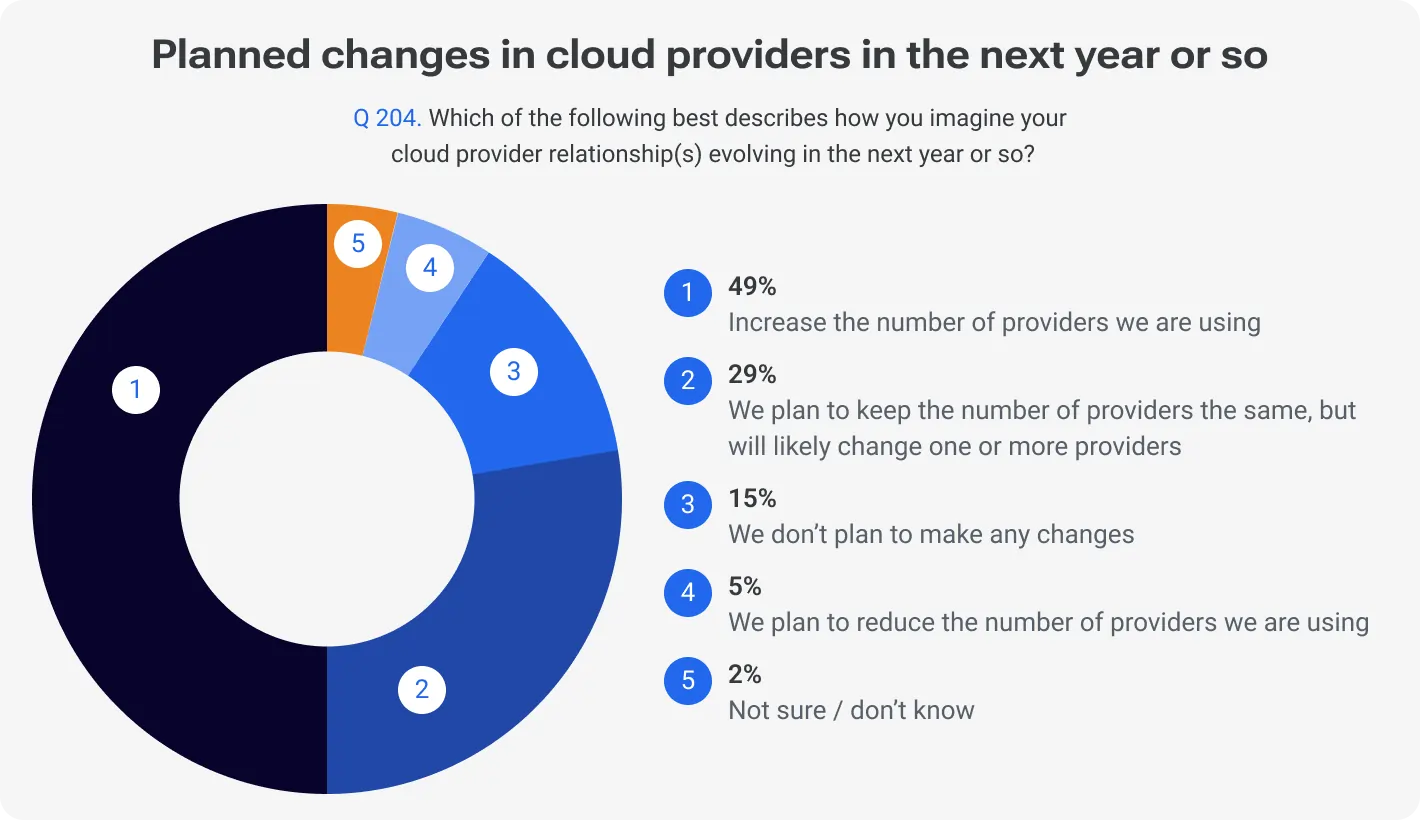
Once you’ve done all the above, the time is ripe for the next step — identifying specific areas for improvement and modernization. Pinpoint outdated technologies, inefficient processes, and bottlenecks that impede your productivity.
Conduct code analysis: Use static code analysis tools like Coverity or Checkmarx to identify code quality issues, security vulnerabilities, and opportunities for refactoring.
Perform risk assessments: Evaluate the risks associated with legacy applications using frameworks like NIST Cybersecurity Framework or ISO/IEC 27001. But let’s run through typical and unconventional frameworks in this journey.
The Business Value Assessment (BVA): Measures the level of legacy software impact on your business. Consider factors like operational efficiency, user experience, and maintenance costs. If current software has a low business value — replace or retire it. But pay attention: high-value applications might warrant refactoring or replatforming. Top tip: Set pricing model goals based on historical data to optimize cloud spending.
The SWOT Analysis: A very versatile framework that can be adapted to legacy application assessment. Identify the strengths (e.g., proven functionality) and weaknesses (e.g., outdated security protocols) of your applications. Analyze the opportunities for improvement through modernization and the threats posed by clinging to outdated systems (e.g., data breaches and compliance issues).
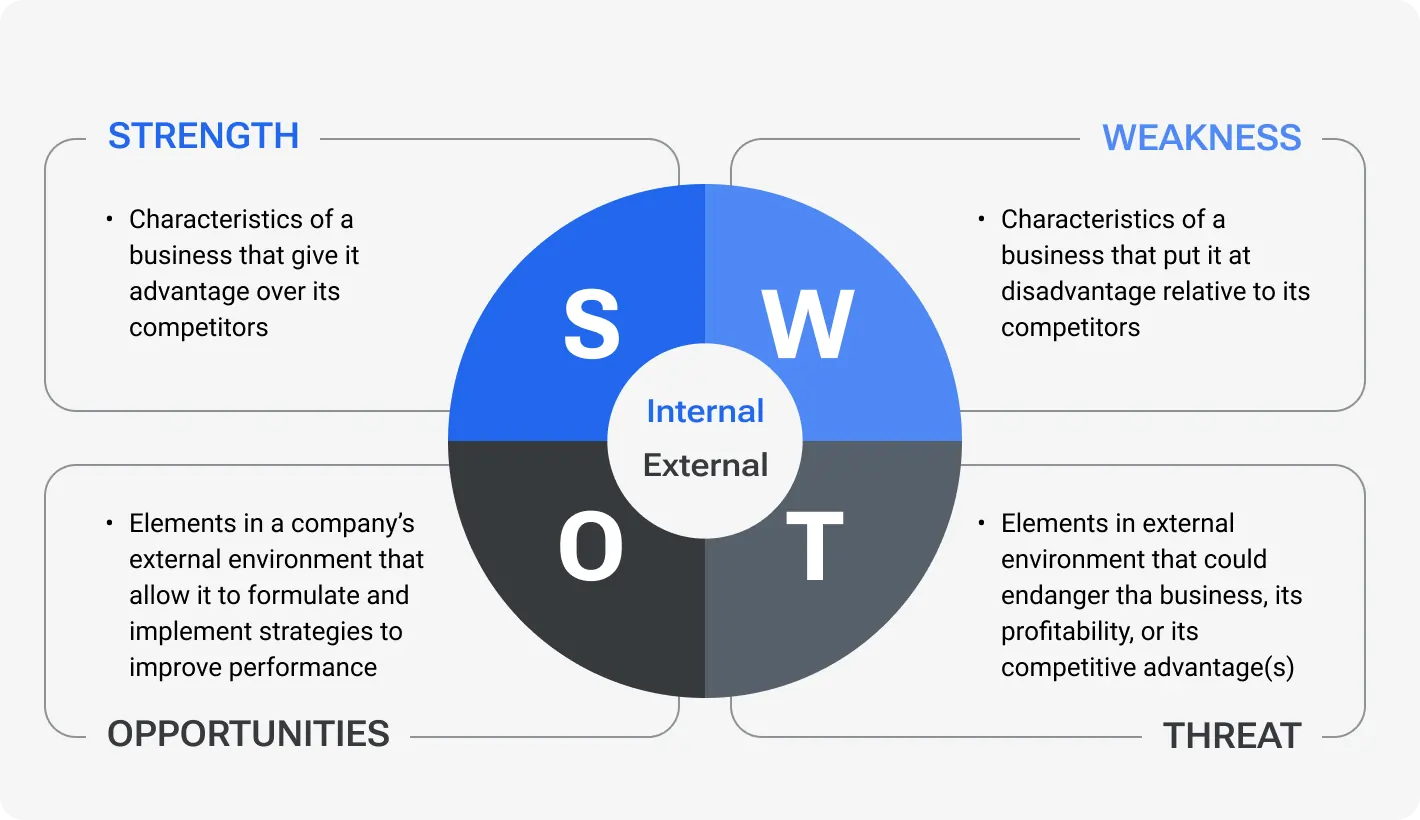
The User Experience (UX) Audit: Typically, legacy software is clunky and user-unfriendly. The UX audit focuses on identifying pain points users experience while interacting with the application. Your modernization efforts in hybrid environments can target these areas to improve them.
The Cost-Benefit Analysis (CBA) of Integration: It’s like pros and cons but the cost and benefits. Calculate integrating specific legacy applications within your hybrid multicloud environment. The most obvious “channels” of costs are development effort, ongoing maintenance, and the potential ROI compared to replacing the application with a modern cloud-based solution.
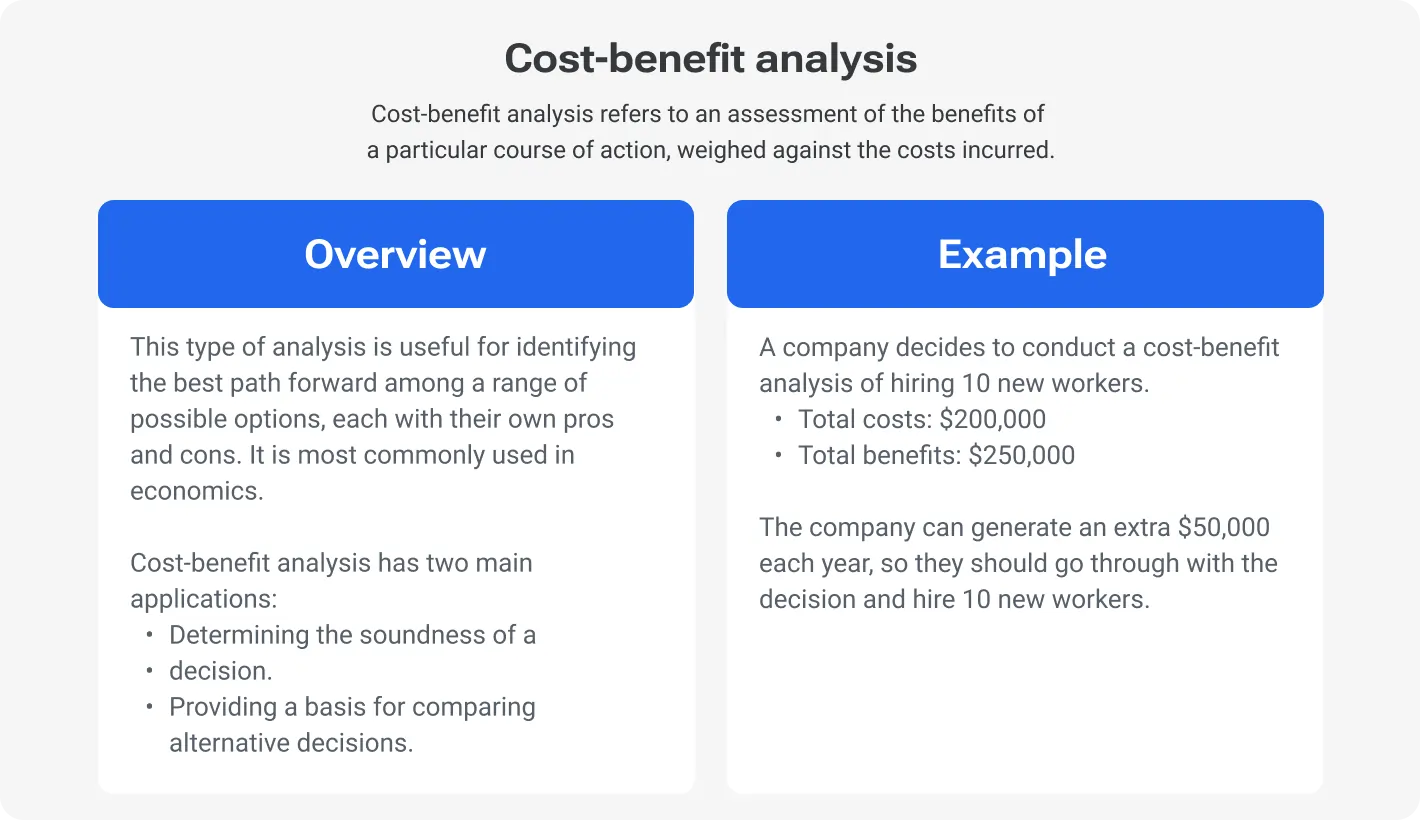
Application Dependency Mapping Tools: These tools allow visual representation of the dependencies between your legacy applications and other systems within your IT landscape. This helps to minimize the risk of issues and outages. However, some methods may not be effective in a hybrid IT environment, particularly when it comes to cloud attributes like services and self-service automation. Therefore, it is necessary to complete application services dependency mapping as part of the assessment and planning process.
What exactly to use: Mentioned above X-Ray by AWS, Azure Monitor by Microsoft
Application Performance Monitoring Tools: Instruments for continuous monitoring of legacy applications performance. Perfect aider for identifying performance bottlenecks, security vulnerabilities, and resource utilization issues. A crucial point for prioritizing which applications require modernization.
What exactly to use: Datadog, New Relic
Cloud Migration Assessment Tools: These tools can evaluate whether your legacy applications can migrate to the cloud. When using these types of tools there are a lot of factors that are assessed: application architecture, dependencies, resource requirements, etc. This information will help you to make informed decisions about the most effective modernization strategy.
What exactly to use: AWS Migration Hub, Azure Migrate
There's no one-size-fits-all approach when it comes to legacy application modernization. The key is selecting the most suitable strategy based on the specific prerequisites and inputs. Below, we bunched five key strategies and their practical implications to help you choose the most suitable path forward.
Replatform is when you migrate legacy applications to newer platforms or frameworks while preserving their core functionality and features. But there is a thing. To allow legacy app to migrate to a cloud platform (for example) devs must supplemently change the code. Often these are minor changes but still. This strategy is particularly useful when dealing with applications built on outdated programming languages or infrastructure.
Benefits:
Access to a larger pool of developers with modern skillsets
Ongoing security updates and maintenance from the platform provider
Improved performance and scalability
Example:
Retail company has a legacy e-commerce platform that they want to enhance. They move it over to Google Cloud Platform (GCP), and this way, they gain access to auto-scaling capabilities, improved uptime, and reduced infrastructure costs. Additionally, we can suggest replatforming the application built on an outdated PHP version to a modern framework like Laravel or Symfony.
Refactoring implies more significant code changes. It focuses on improving the internal structure of existing codebases without altering their external behavior. Like, when the function remains the same but the way it works changes. This strategy is beneficial for reducing technical debt and enhancing maintainability.
Benefits:
Improved code maintainability and developer productivity
Performance enhancements
Less number of errors and decreased risk of vulnerabilities
Example:
We have a financial services firm. And we decided to refactor our legacy monolithic application into a microservices architecture. Step by step we break down the application into smaller, decoupled services, and this way, deploy changes independently. This move allows us to scale components horizontally, and adapt to changing market conditions more effectively.
“Lift and shift" stands for moving legacy applications to cloud-based infrastructure. These may be Amazon Web Services, Google Cloud Platform, or Microsoft Azure. You simply “assign” infrastructure management tasks to the mentioned providers, reducing capital expenditures and accelerating time-to-market for new features this way. This approach is often named as the least labor-intensive, but, honestly, it’s not always the best possible way.
Benefits:
Reduced burden of infrastructure management
Lower capital expenses
Faster time-to-market
Example:
Healthcare provider migrates its electronic health records (EHR) system to AWS. This way, the company wants to address accessibility and scalability issues. As AWS has HIPAA-compliant infrastructure, the provider securely stores and accesses patient data, ensuring high availability for critical healthcare applications. Another real-life example is Band of America which slashed millions by migrating to the cloud.
This approach means developing new applications from scratch using modern technologies that better align with requirements. It’s ideal for legacy applications that are deeply entrenched and heavily customized.
Benefits:
Enhanced performance, security, and scalability
Improved UX
Easier integration with modern tools you may need further
Example:
Imagine a bank with a legacy core banking system. Their team opts to rebuild the system with modern APIs and microservices architecture. Obviously, after the job is done, they get effortless integration with third-party applications and financial services.
Sometimes, legacy applications just need to be replaced or retired. Find out whether your applications are obsolete and either replace them with modern alternatives or retire them altogether. So, in simple words, you just use off-the-shelf solutions instead of retired ones.
Benefits:
Reduced maintenance costs for outdated technologies
Streamlined IT environment
Strategic resource allocation
Example:
Conditional company retires its legacy inventory management system, which provided no real-time visibility and automation. Instead, the company adopts a cloud-based inventory management solution that offers advanced features and integration capabilities.
If you encounter a modernizing need for the first time, it may seem like the endless challenges of the hybrid cloud, organizational moments, etc. Just because you need to think through it very carefully and consider various factors to ensure a successful outcome. Can’t help but reveal some points you could do with.
The main thing is to get to the same page alongside broader business objectives and goals. This ensures that modernization initiatives are driven by strategic priorities and contribute to overall business success.
To be more practical, open a new doc file and thoroughly answer the following:
How will modernization improve operational efficiency and reduce costs?
Will it enhance customer experience and drive revenue growth? What my answer is based on?
Does it facilitate the development of enhanced new products/services?
The most thought-provoking topic as modernization projects can incur significant costs. They aren’t limited to infrastructure upgrades. Set up a realistic budget and allocate resources accordingly. This is very corny yet often missed. Why? Because there is a mind-blowing shortage of skilled specialists worldwide. Statista, for example, states that in 2022 there was a 70% deficit of skilled pros in the tech industry.
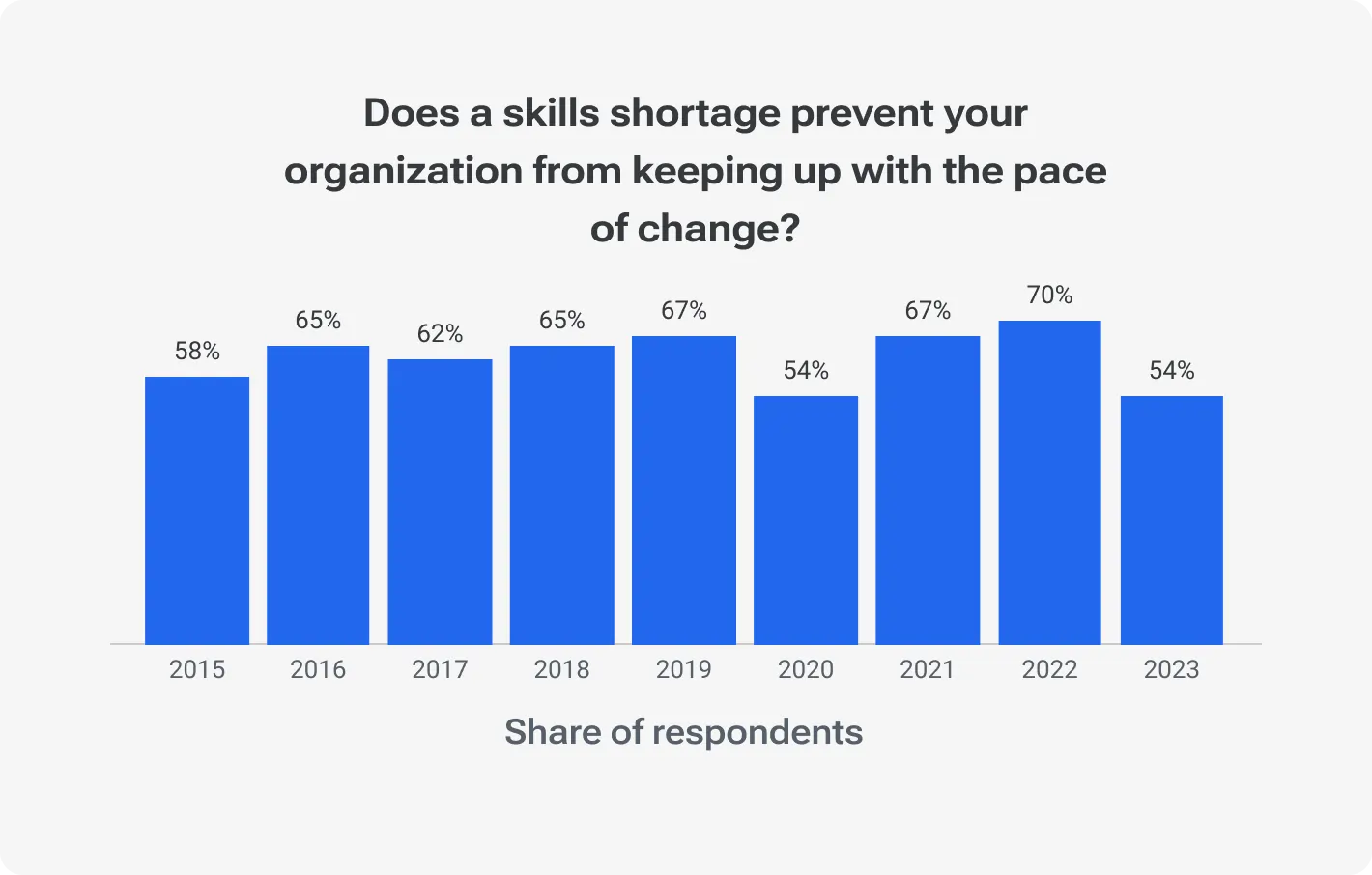
Let’s down to more practical things again. What to consider:
Licensing fees for new technologies and platforms.
Migration costs associated with moving applications to the cloud.
Development costs for refactoring, replatforming, or rebuilding applications.
Training costs for the staff on new technologies and processes.
Clear timelines and milestones are essential for effective project management. Develop a detailed project plan that outlines key deliverables, dependencies, and deadlines to keep the modernization effort on track. Use any comprehensive framework for outlining the project, from OKRs to Balanced Scorecards.
Here, the main approach is proactivity. That’s simple. Modernization initiatives often entail inherent risks. For example, system downtime, data loss, or even security breaches. That’s why proactive risk management strategies are essential for protecting your business.
Conduct a thorough risk assessment to identify potential threats
Develop a contingency plan to address potential issues
Employ data backup and recovery solutions to safeguard sensitive information
Implement rigorous security measures throughout the modernization process
Any changes to the hybrid environment can have a significant impact on existing workflows and users. So, remember: communicate with stakeholders during the project to get on the same page; don’t forget about end-users to manage their expectations and address concerns. All these moves will help you minimize disruption during the modernization process.
If your native industry is strictly regulated, you must ensure that your modernization efforts comply with relevant laws and industry standards. Pay special attention to data protection regulations, such as GDPR or HIPAA, as well as industry-specific compliance requirements.
Without any hint, an ideal option is to take advantage of external expertise in this case. Devico has a proven successful record of similar projects, and our team will be happy to guide you with:
Conducting a compliance audit of legacy applications before modernization
Selecting modernization strategies and technologies that comply with relevant regulations
Continued adherence to industry standards
Test the waters before diving in — this is probably the most valuable advice for this reason. For large-scale modernization initiatives, consider conducting proof-of-concept (POC) projects with a smaller subset of legacy applications. This way, you’ll be able to test modernization approaches, identify potential challenges, and refine your strategy before embarking on a full-fledged modernization project.
Now, let’s dive into other best practices.
IT teams must understand the company's strategic goals and business requirements, while business stakeholders need to appreciate the technical complexities involved. Single crop-team communication channels and regular meetings can help facilitate alignment and collaboration.
Top tip: Gather a committee or something similar that includes representatives from both IT and business departments. This way, modernization efforts will be aligned on all levels. Very banal advice, but still — consider Slack, Microsoft Teams, or another single channel for such a committee. While Teams is widely used, it still has many concerns in terms of smooth work (switching between new and old web versions, the only format for documents, etc.)
Show Me Your App, And I Will Tell You Who You Are: This interpretation of a famous phrase about friends serves as a humorous reminder that legacy applications come in all shapes and sizes. Focus your modernization efforts on applications that deliver the most significant business value.
Top tip: Use tools such as application portfolio management (APM) software to assess and prioritize applications based on factors such as usage, complexity, and strategic importance. Prioritize applications that offer the highest ROI from modernization efforts.
Specific tool: Beyond APM, consider also using the Gartner Value Stream Mapping methodology to identify and assess the value streams associated with your legacy applications.
Keep it simple — break it down, build it up. And agile methodologies (Scrum, SAFE, Kanban, etc.), promote iterative development and collaboration, making them well-suited for modernization projects. Follow us: breaking down large projects into smaller tasks, organizing them in sharp and measurable sprints, and as a result — delivering value incrementally and responding quickly to market feedback.
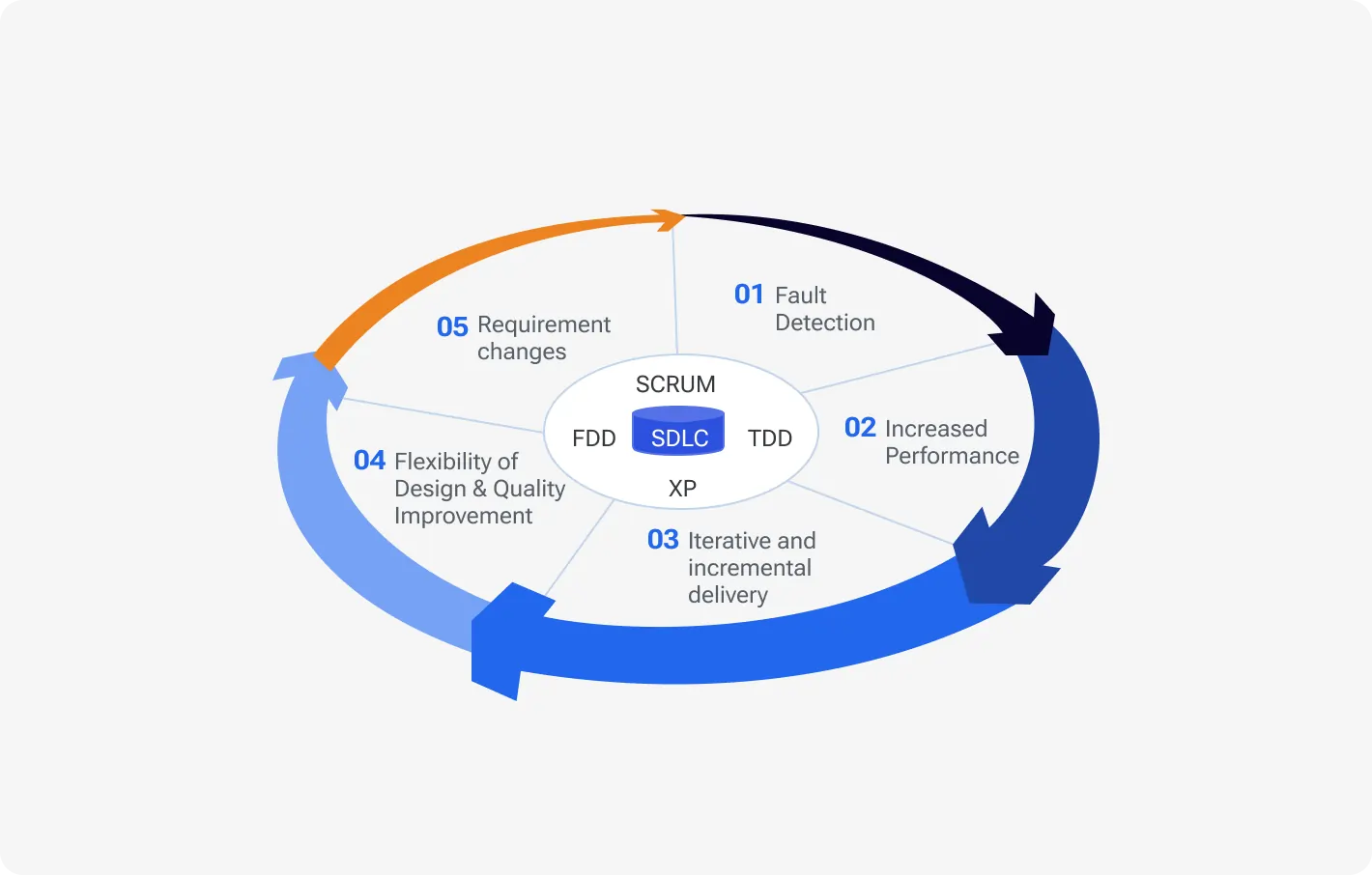
Potential concern: Many still use traditional waterfall development methodologies, which can be inflexible when dealing with legacy systems. Meanwhile, teams using agile methodologies are 25% more productive.
Top tip: Build cross-functional teams to work closely together. Ensure there are no cultural concerns and go beyond.
In any hybrid environment endeavor you highly need skilled employees. For this reason, you should provide them with opportunities to learn new technologies. It isn’t an investment in them, actually. Rather in your future success. Cynically? Maybe, but comprehensive training programs and change management workshops help you first. Then — employees — to adapt to change more effectively.
Top tip: Consider implementing a train-the-trainer approach to empower internal champions who can advocate for change and provide ongoing support to their peers.
Automation and DevOps practices have reigned supreme for several years already. They significantly streamline modernization efforts and accelerate deployment cycles.
The additional bonus is beastly boosted efficiency. By automating repetitive tasks, such as testing, provisioning, and deployment, you can reduce manual errors and ensure consistency across environments.
Top tip: Invest in automation tools and platforms that integrate seamlessly with existing infrastructure and technologies, and prioritize the automation of high-impact and repetitive tasks. You might also be interested in infrastructure as code (IaC) tools. They help to automate the provisioning and configuration of infrastructure required for the modernized application. Some of the most popular IaC tools are Terraform, Ansible, Jenkins, and GitHub Actions.
Got modernized? Great, congrats! This is the beginning, actually. Continuous monitoring and optimization are the next endless steps. Without these steps, you can’t ensure ongoing performance and security. Implementing robust monitoring and analytics solutions will provide you with visibility into the performance, availability, and security of their modernized environments in real time.
Top tip: Try out the application performance monitoring (APM) tools to track the performance of the application and identify potential bottlenecks. They may serve as a red pill — very sobering. Also, you could do with security information and event management (SIEM) tools to monitor for security threats and vulnerabilities.
Legacy application modernization is a door to new quality levels, market share, and the hearts of your clients. We can name many cases of successful modernization “campaigns”. For example, Walmart’s big migration in 2020. By setting up a hybrid environment for their operations they managed to lower their cloud costs by 10-18%. Despite being connected to this endeavor hybrid cloud challenges, this example again underscores the importance of keeping up with modern technologies and approaches.
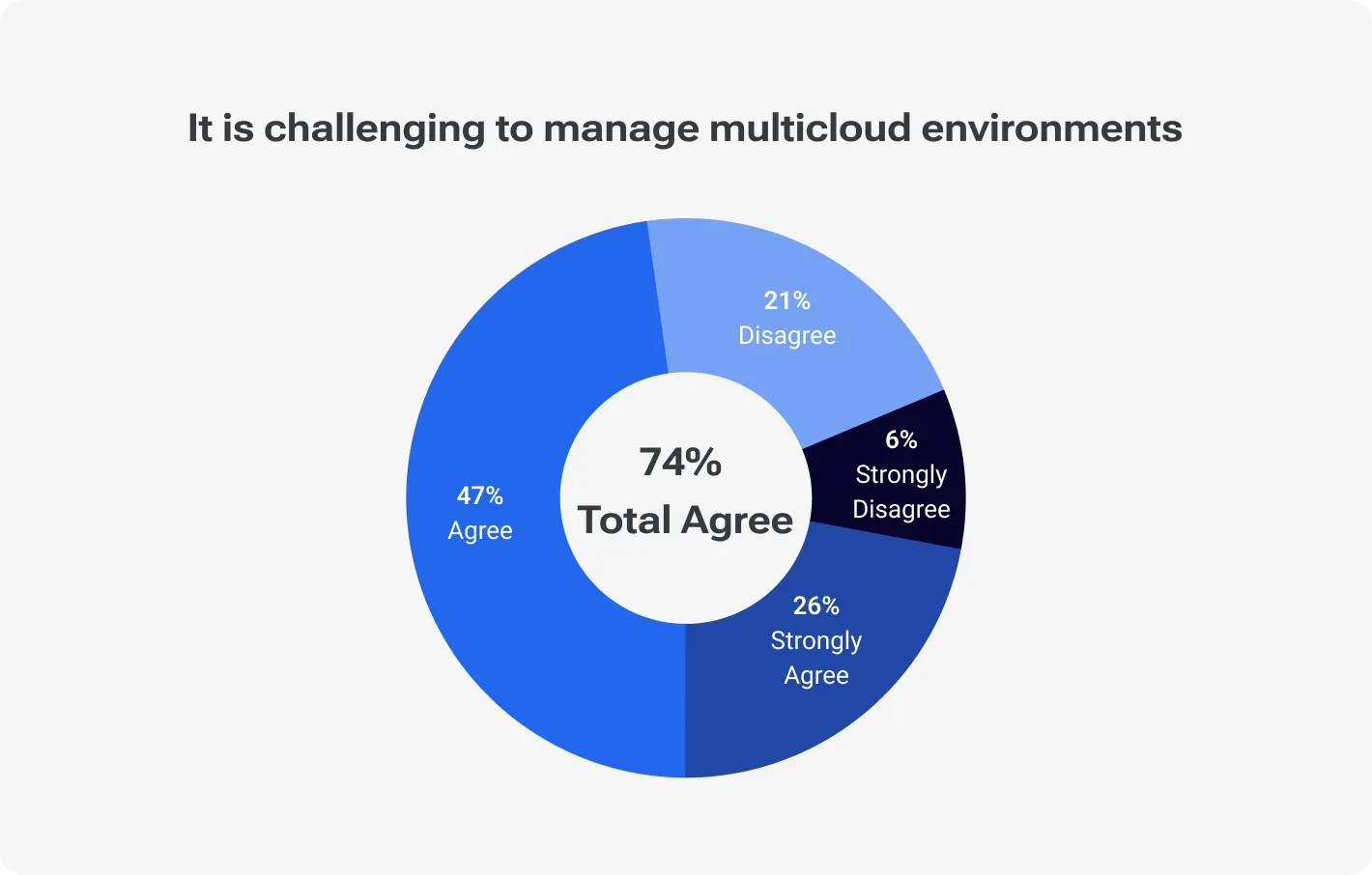
On the other hand, if you cling to outdated systems, you risk falling behind. As we already stated at the beginning, 95% of tech leaders in the US are sure that nowadays hybrid cloud environment and legacy app modernization are vital.
But at the same time, 75% of modernization projects typically fail, and 73% agree that multicloud environment is hard to manage.
So the best possible solution is a proactive and strategic approach. Assess your legacy landscape, identify the right modernization strategy for each application separately, and ideally, find a seasoned tech partner.
Outsourcing to Czechia

Dec 2nd 25 - by Devico Team
Find out how much it costs to hire software developers in Czechia in 2025. Compare hourly rates, roles, and factors that impact pricing.
Outsourcing to Czechia

Nov 25th 25 - by Devico Team
Compare Czechia and Poland for software outsourcing in 2025. Discover costs, talent, infrastructure, and which country fits your project best.
Outsourcing to Czechia

Nov 18th 25 - by Devico Team
A complete guide to outsourcing software projects to Czechia, learn about costs, talent, benefits, and how to build successful partnerships in 2025.